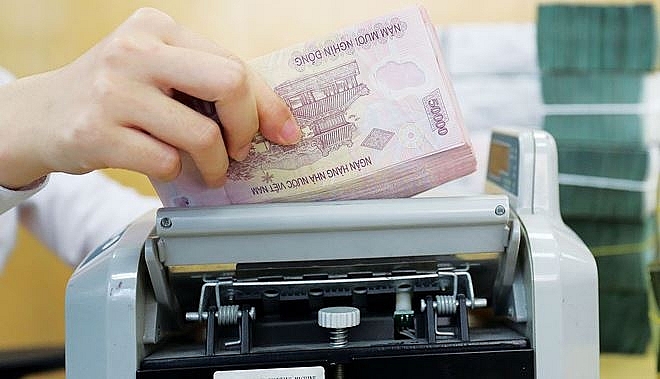[ad_1]
There has been great variations in small-scale banks’ bad debts performance in the first half of the year, with some showing great improvements, while others struggle to cope.

While NamA Bank thrived, Saigon Bank’s bad debts are now double the ceiling set by the state
The total bad debt volume of Ho Chi Minh City-based NamA Bank fell to VND391 billion ($17.3 million) by the end of June 2018, taking a 44.7 per cent plunge compared to the VND708 billion ($31.3 million) earlier this year, according to the bank’s financial statement.
Similarly, its bad debt ratio slid to 0.95 per cent from 1.95 per cent early this year.
Falling bad debts led to a sharp rise in the bank’s first half pre-tax profit, which touched VND335 billion ($14.8 million), three times as much as in the corresponding period of 2017.
NamA Bank is also the first bank reaching its full-year profit target, which was set at VND320 billion ($14.2 million).
By the end of June 2018, the total bad debts volume at BacA Bank amounted to VND436 billion ($19.3 million), making up 0.73 per cent of the bank’s total outstanding loan balance.
Its provisioning costs in the first six months shed 15 per cent on-year to VND210 billion ($9.3 million), leading to a 47 per cent jump in the bank’s total consolidated pre-tax profit which surpassed VND434 billion ($19.2 million), equal 47 per cent of the full-year target.
Also during the period, privately-held Kien Long Bank succeeded in tackling nearly VND150 billion of bad debts it had earlier sold to state-owned Vietnam Asset Management Company (VAMC). The bank had then posted VND121 billion ($5.4 million) in pre-tax profit, fulfilling 30 per cent of the year’s plan.
Apart from banks that saw positive developments in their bad debts, several other banks reported a worsening situation.
Bad debt volumes at VietBank rose sharply from VND387 billion ($17.1 million) early this year to VND547 billion ($24.2 million) by the end of June 2018. Its bad debt ratio rose from 1.35 to 1.73 per cent during the period.
A typical case of sharply rising bad debts among banks of modest size was Saigon Bank whose bad debts ratio surpassed 6 per cent at the end of June 2018, while the limit set by the state is 3 per cent.
Similarly, PG Bank saw a 12.9 per cent jump in its bad debts volume in the first half, which touched VND780 billion ($34.5 million) as of June 30, 2018.
Its bad debt ratio then inched up from 3.23 per cent earlier this year to 3.75 per cent by the end of the second quarter. PG Bank is in the process of merging with Ho Chi Minh City’s major commercial lender HD Bank in a deal which is expected to be wrapped up this year.
A typical case of sharply rising bad debts among banks of modest size was Saigon Bank whose bad debts ratio surpassed 6 per cent at the end of June 2018, while the limit set by the state is 3 per cent.
Since its establishment in October 2013 to the end of 2017, VAMC, dubbed as Vietnam’s bad debt bank, succeeded in recouping about VND81.5 trillion ($3.6 billion) of bad debts out of the VND307.9 trillion ($13.6 billion) total principal bad debt volume.
During the period, VAMC bought 26,221 debts of 16,269 customers of credit institutions.
to a 47 per cent jump in the bank’s total consolidated pre-tax profit which surpassed VND434 billion ($19.2 million), equal 47 per cent of the full-year target.
Also during the period, privately-held Kien Long Bank succeeded in tackling nearly VND150 billion of bad debts it had earlier sold to state-owned Vietnam Asset Management Company (VAMC). The bank had then posted VND121 billion ($5.4 million) in pre-tax profit, fulfilling 30 per cent of the year’s plan.
Apart from banks that saw positive developments in their bad debts, several other banks reported a worsening situation.
Bad debt volumes at VietBank rose sharply from VND387 billion ($17.1 million) early this year to VND547 billion ($24.2 million) by the end of June 2018. Its bad debt ratio rose from 1.35 to 1.73 per cent during the period.
VIR
[ad_2]
Source link
